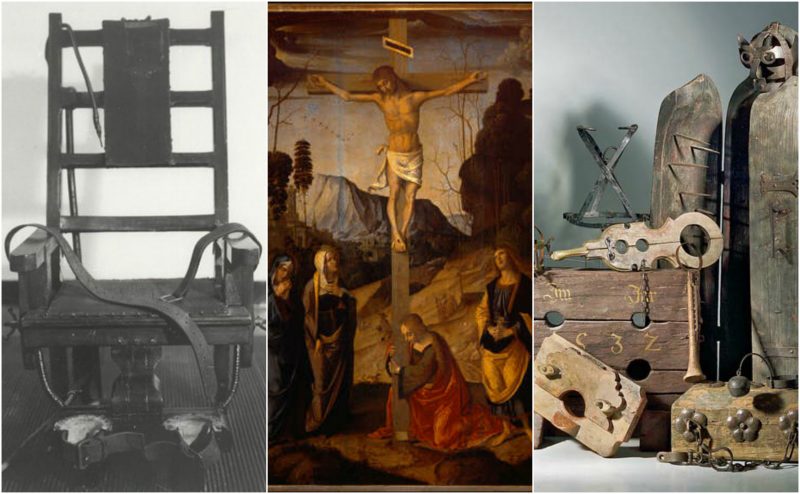Over the centuries there have been some bizarre torture mechanisms, as well as medical treatments, used. Some of those mechanisms are so gruesome and brutal that it is astounding that they were ever used by human beings on other human beings. Just think, some other human had to come up with those contraptions in the first place. What in the world was going on in their mind to think of these things?
Nowadays, people think prison is enough for criminals. In past centuries, however, people believed others deserved a much harsher punishment for their crimes. There were punishments that ranged from boiling someone alive to sawing them in half. The most disturbing part is that the public was encouraged to view these spectacles.
Here are some of the top most horrifying inventions to be used for torture, war, and medicine:
-
The hollow bull
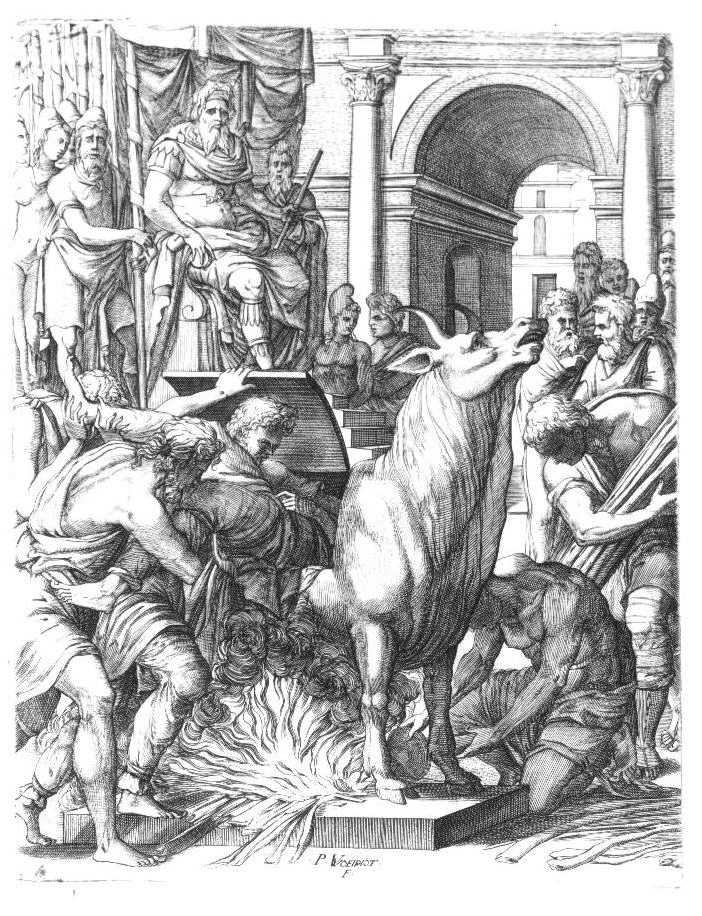
Perillos being forced into the brazen bull that he built for Phalaris.Source
This statue was invented in ancient Greece by a man named Perillus. He was a bronze worker in Athens and the bull was given as a gift to a cruel tyrant named Phalaris of Agrigentum (in Italy) . The idea was to put the criminals inside the hollow statue and roast them alive by setting flames under the bull’s stomach. Perillus also designed the bull to make “music” from the desperate cries of the criminal until they died. He described it as the “tenderest, most pathetic, most melodious of bellowings.”
To test the gift, Phalaris had Perillus climb into the bull himself. Phalaris let him cry for a while, and then Perillus was let out and eventually thrown over a cliff to his death.
-
Crucifixion

Crucifixion of Jesus by Marco Palmezzano (Uffizi, Florence), painting c. 1490 Source
This tactic was devised over 2,000 years ago as a punishment for the most serious crimes. Crucifixion would kill the victims in a long, painful way. Their hands and feet were nailed or bound tightly to a cross. Their legs would be broken by the executioners in order to speed up death, since their weight would be transferred to their arms. This would pull the shoulders and elbows out of socket and leave the chest to bear the weight. Inhaling continued to be possible, but exhaling would be excruciating and eventually would cause the victim to suffocate to death. It would take about 24 hours for the person to die.
-
Beheading
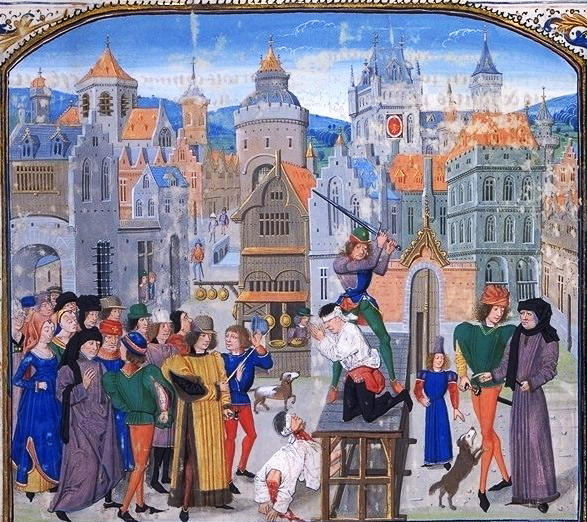
Beheadings in a painting from Froissart’s Chronicles, beginning of the 15th century.Source
Beheading had been around for centuries before this contraption, but in 1789 a French physician known as Dr. Joseph Guillotin had proposed a much more efficient and humane device for decapitation. When the executioner would release a rope, a blade would drop on the victim’s neck, killing them within a second. This helped eliminate the human error experienced when an ax was used. When using an ax, it generally took several swings to cut the head clean off. The guillotine allowed executions to be watched by the public, making the executioners popular celebrities.
-
Electrocution
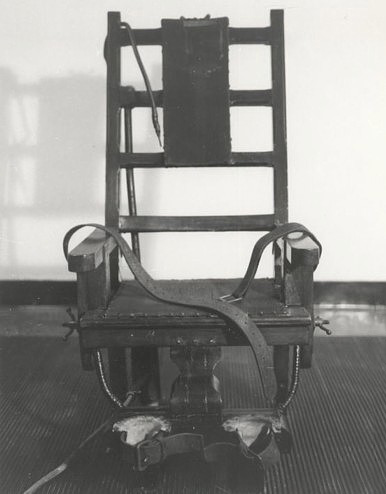
‘Old Sparky’, the electric chair used at Sing Sing prison.Source
This was introduced as a quicker and less painful method in the 1880s. When brought to the chair, the person would have their head and one calf shaved to reduce resistance to electricity. The contraption was then strapped across their head, arms, and legs. A wet sponge was placed on the head and an electrode in the shape of a metal skullcap was secured at the top. Another electrode would then be attached to the shaved leg and the power of 2,000 volts would pass through the body, paralyzing the body and causing a heart attack.
-
Torture
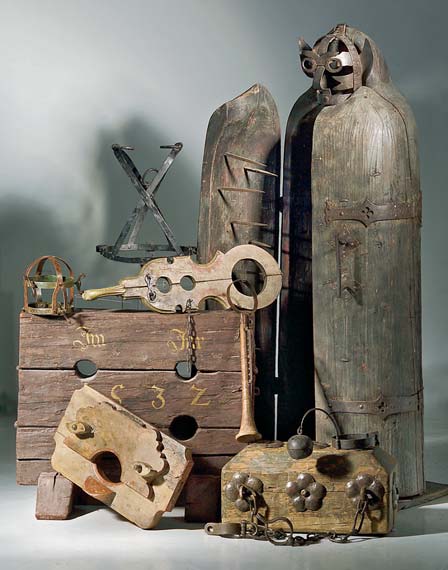
A variety of torture instruments. Many, including the large Iron Maiden of Nuremberg, were never used for torture. Source
This form of punishment has been used for centuries, dating back to the Greeks and Romans, who tortured criminals as part of their justice system. By the Middle Ages, torture played a major part in punishment, especially for crimes of treason. If someone had been disloyal, then there was a series of torture devices waiting. Usually torture was done in secret, most often in an underground dungeon. Great skill went into performing those tortures, as well as in the use of special instruments. Depending on the person tortured, it wouldn’t take long to get a confession. Some people would bear the contraptions for a short amount of time, while others saw the machine and immediately gave up.
Some devices were designed to just inflict pain while others would result in a slow, drawn-out death, prolonging the suffering until the person died on the device. Even if a person survived the torture, they were usually left disfigured and had to be carried to their trial, no longer able to walk on their own.
Toward the mid-17th century, torture became less common since many believed it was not effective enough. Many prisoners would lie to end the suffering, resulting in nothing more than an imprisonment for false confessions. Torture was eventually banned in 1948, by the United Nations General Assembly.
-
Trepanning
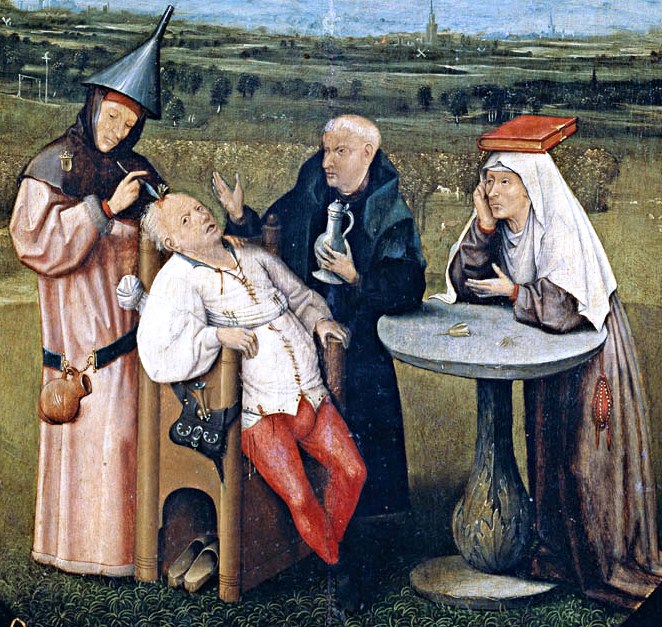
Detail from The Extraction of the Stone of Madness, a painting by Hieronymus Bosch depicting trepanation (c.1488–1516).Source
This medical procedure involved drilling a hole into the person’s skull. It was a popular medieval treatment that was prescribed to allow a disease-causing evil spirit to escape the skull.
-
Bloodletting
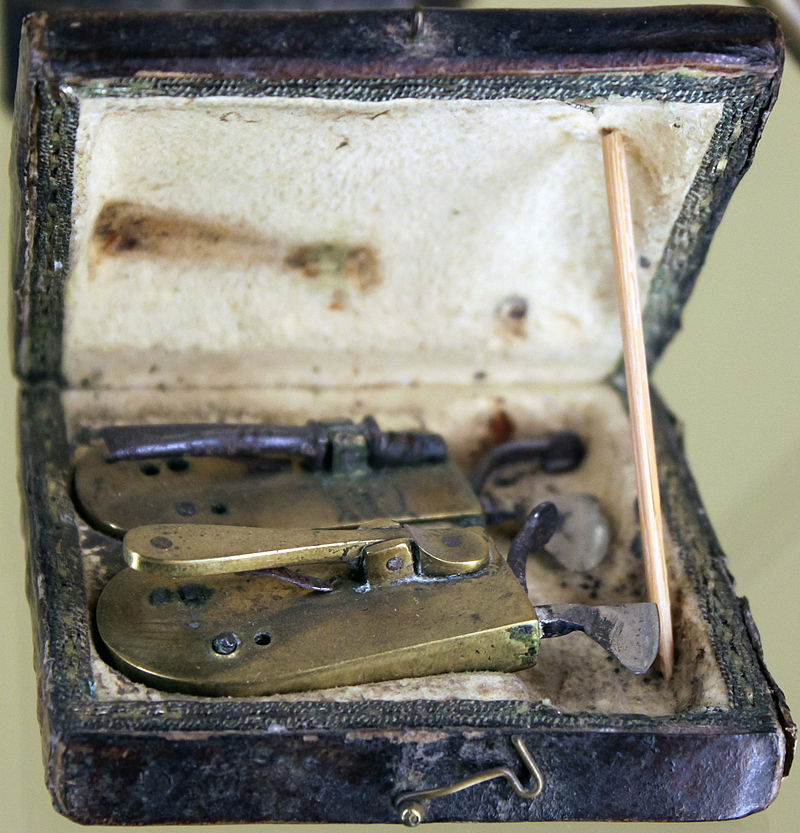
Bloodletting-Set of a Barber Surgeon, beginning of 19th Century., Märkisches Museum Berlin
Just like in the name, a patient would be cut-open somewhere on the body so that the disease-ridden blood could drain. Many doctors believed that this would restore things back to normal.
Usually, the doctors who performed the procedures were monks, as they tended to have basic medical knowledge. Other people who performed these procedures were barbers or butchers who had the right tools to perform the job. This usually meant that the hospitals the patients stayed at were disgusting and unclean, resulting in numerous infections and nasty living quarters. The equipment was never sterilized since the doctors did not know about contamination. The procedures were also carried out without anesthetic.
-
Gases used in war
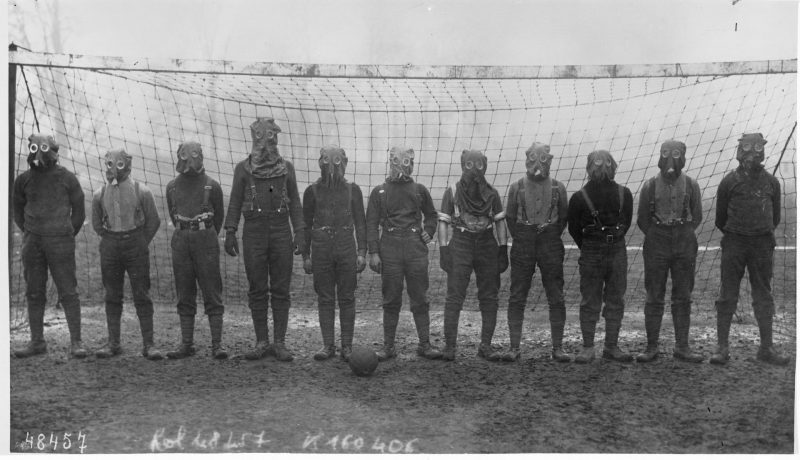
Football team of British soldiers with gas masks, Western front, 1916.Source
On April 22, 1915 Germany launched the world’s first large-scale gas attack in a war. The soldiers had to wait several weeks for the wind to blow in the right direction. After that, they released clouds of chlorine gas on the enemy trenches in Ypres, resulting in the suffocation of Allied troops. The Hague Convention of 1899 had actually prohibited the use of poisonous weapons, but Germany justified its actions by claiming that France had already broken that ban with tear gas grenades in 1914.
The chlorine gas attack started a chemical arms race. By the end of World War I around 50 chemicals had been used in the battlefield. The ones most used were chlorine, phosgene, and mustard gas, which would leave the victims to die a slow, painful death.
After that, gas masks were developed, but chemicals like mustard gas could still cause terrible blisters when coming in contact with the skin.
One of the most devastating gases are nerve agents like sarin. These gases attack the nervous system, making contact lethal and killing a person in minutes.
Napalm was another gas used, especially during the Vietnam War. It is a flammable liquid with a gel-like consistency which allows it to stick to surfaces easily. It is put in a bomb combined with gasoline or jet fuel, which then explodes on impact. It is capable of burning at more than 2,760 ° Celsius. The slightest contact can cause severe burns on the skin and possible death by asphyxiation. When it is ignited, it generates carbon monoxide and removes oxygen from the air, suffocating people in the vicinity.
In the 7th century, Byzantine Greeks had made a flammable liquid which could burn on water, designed especially for naval warfare. The liquid fire was sprayed at the enemy, using the early version of a flamethrower. It could also made into a grenade; these would create a raging fire that could be extinguished only by sand, vinegar, or urine. The ingredients are still unknown, but it is believed that it contained petroleum, sulphur, and pine tar.
l
